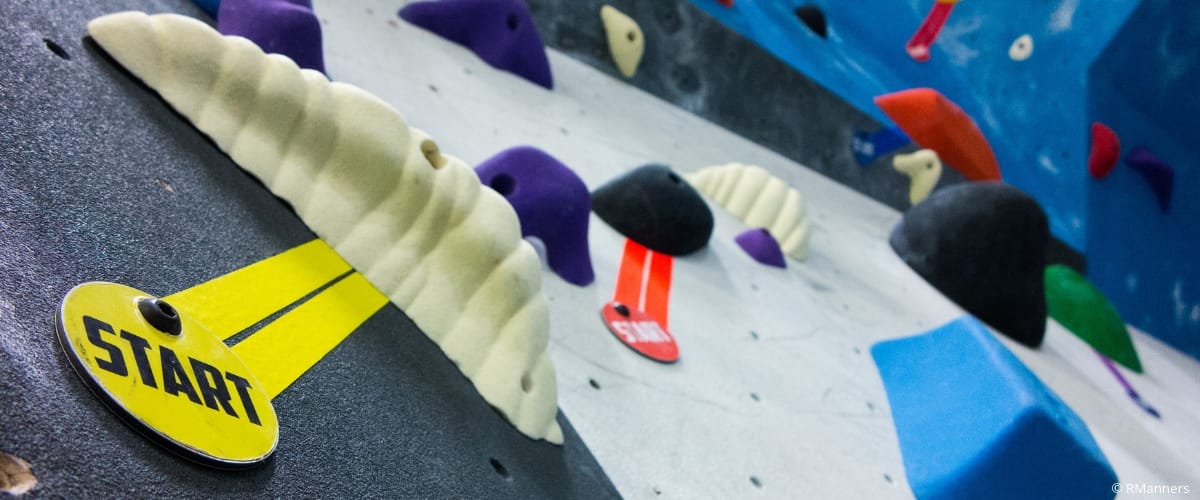Indoor Climbing Programs for Boomers, Part I - The Boomer Opportunity

My Story
I’m just a flatlander Iowan, but I believe the information and lessons I’ve learned as the instructor for Climb Iowa’s Boomer Climbers Movement Class could be valuable for your climbing gym operation.
Ten years ago, at age 63, I walked into an REI flagship store with my two granddaughters (5 and 7 years old), and there was a 50’ climbing tower with people dangling from ropes. After my initial surprise, I carelessly said, “I’ll do it if you’ll do it” and they took me up on it! Instant regret - I’m not fond of heights. The oldest granddaughter climbed and then it was my turn. Wait, I thought, climbing can’t be good for folks over 50, 60, or 70…right? That’s certainly how I felt as I stood at the bottom of that tower looking up and wondering how the hell I’d gotten myself into this fix.
At that point I was like many Boomers. I thought I was pretty active but knew I was a ‘bit’ overweight, a ‘little’ stressed, didn’t exercise ‘quite’ enough (who has time?), had a ‘little’ problem with asthma, and had a ‘bit’ of a problem climbing too many stairs at once. I had never heard of, much less considered, indoor rock climbing.
Fast forward ten years, I’m 55 pounds lighter, have a resting heart rate about 25 beats/minute slower, and for nearly four years I’ve enjoyed being the instructor for the Boomer Climbers Movement Class at Climb Iowa. I look forward every month to helping a new Boomer class have fun and rediscover exhilaration while greatly improving their balance, flexibility, strength, and agility. My hope is that all of our Boomer students will find that indoor top-rope rock climbing with grace and skill is a great path to lifetime fitness and health.
The Business Case for Boomer-specific Programming
Beyond the fact that climbing can make a positive impact in the lives of Boomers, there is a compelling business case to be made:
- Millions of Boomers have the time
- Millions of Boomers have the money
- Retired Boomers can attend classes and climb during weekdays
- Boomers are increasingly interested in fitness and health
- There are 108 million Americans over 50, and 10,000 of them turn 65 every day
108 million folks over 50 are a few too many to ignore… agreed? Get started now if you haven’t already! Find the right instructor, design a Boomer class, and add a vibrant community of mature adult climbers to your business. It’s a big opportunity and a smart strategy.
According to Climb Iowa’s management team, climbers 50 years and older represent 7% of their membership base, and that number is rising every year. Some of these members are climbing 5.11 and 5.12 routes. The route ratings are not lenient, and these are flatlander Iowans – non-climbers prior to taking the Boomer Climbers Movement Class. Boomers at Climb Iowa learn that climbing techniques and precision movement skills are a great path to a lifetime of fitness, social interactions, and a new circle of friends.
The Boomer community is an enthusiastic and growing part of Climb Iowa’s business. Boomers may be vocal about their climbing, as it seems they do a good job recruiting new members after their experience in our month-long Boomer Climbers Movement Class.
Marketing Tips for Boomer Classes (ages 50 and over):
- Create signage and place around the gym
- Seniors prefer the term ‘Boomers’
- Word of mouth is best, find ways to encourage this
- Plan a few fairs or events per year specific to seniors/Boomers
- The instructor should be a Boomer who enjoys presenting indoor climbing’s benefits to his/her age group
- Train gym staff to explain the Boomer class to interested individuals
Potential Obstacles for Boomers
The primary obstacle for Boomers is fear of falling and injury. They require a logical and convincing discussion to even consider trying it. Most Boomers have had enough injury in their lives – been there, done that. Therefore, they appreciate an obvious and ongoing attention to risk management more than most and need to see risk management best practices outlined in class descriptions and hear about it at the outset of any discussions.
The secondary obstacle preventing Boomers from indoor climbing is that most have never been exposed to it. Among those who have, few have been presented with good information and available classes specific to their age group.
Messaging for Boomers – Overcoming Objections
Both of the obstacles mentioned above are easily addressed. Many Boomer students have mentioned that my age and ability to relate to their concerns were reassuring factors as they were making their decision to enroll. When we meet, I assure them I’m as interested in avoiding injury as they are, then explain that risk management will be emphasized and taught at all times throughout the month-long class. I also make a point to assure them they won’t need to do anything unless they’re willing (I encourage but don’t push).
Some “always wanted to try it” and saw that we had a class specifically tailored for Boomers. Others were like me; searching for a way to exercise that was more interesting than doing the same repetitive exercise motions over and over again week after week, month after month, year after year. Indoor climbing is pretty much the opposite of repetitive!
Several Boomers who attended our class either know climbers or have close family members who are climbers. Since Iowa winters seem to get longer every year, many Boomers who found their way to our class were simply looking for a great winter exercise activity.
Some students suffer from arthritis and had been prescribed regular exercise but got bored doing the same movements all the time – curls, treadmill, elliptical machines, weight machines, dumbbells, rowing machine, etc.
At least one student got enrolled in our class as a birthday gift from his family.
When Boomers express their concern about risk prior to taking the class, I explain that climbing is dangerous but that published injury rates for indoor top-rope climbing are remarkably low compared to other sports and activities like tennis, biking, or even treadmill exercising. Explaining the difference between actual risk and perceived risk is particularly important for Boomers who are new to climbing. I’m not fond of heights and explain that I didn’t begin taking classes at Climb Iowa until I had researched indoor climbing’s injury rate. Many laugh at that, but I can tell they feel pretty much the same. They’re glad to know injury rates are low compared to other popular sports and activities – many of which they have done before.
I go on to say the goal for the class is to learn to climb with skill and grace and have fun while doing it. It’s also important that the class encourages successful aging through fitness and health. I explain that although it seems unlikely, indoor climbing is actually a great fall prevention activity. We discuss why that’s true and how the strength, flexibility, balance, and agility gained through indoor climbing can help improve their daily lives.
I also mention how much fun it is watching your friends’ faces as you casually mention that you went rock climbing the other day. Boomers who rock climb in Iowa are about as common as big game hunters, but this type of comment may not be as effective if you live in Colorado or Utah.
A Summary of Messaging for Boomers:
- Climbing is dangerous, yet indoor climbing has a remarkably low injury rate per thousand hours of participation when compared to other activities (Again, see Fear vs. Reality on my website)
- How indoor climbing changed the instructor’s life; he’s an active climber at age 72
- Indoor Top-Rope Rock Climbing has a remarkable list of high-value attributes:
- It’s Exhilarating and Social; you meet new friends and interesting people
- It Never Gets Old (routesetters are always busy)
- It’s Low Impact – smooth movements, not jerky, doesn’t pound on joints
- It’s Inter-generational; you can belay and climb with grandkids, children, and younger adults
- It’s Confidence-Inspiring and enhances self-esteem
- It’s a Total Body Workout, yet so fun you don’t even notice how much you’re exercising
- It’s Physical and Cognitive; fun on many levels!
- Functional Strength is best realized through skill development. Indoor climbing can improve daily life by delivering true functional fitness to Boomers.
- Indoor Rock Climbing is a great Fall Prevention Activity – here’s why:
- 2.4 million older Americans are treated for fall-related injuries annually, 700,000 are hospitalized
- Falls are the most common cause of traumatic brain injuries in the United States
- Indoor climbing has a world-class fall prevention system – perfect for older adults This fall prevention system develops balancing muscles and skills – great for older adults
- Indoor climbing strengthens the core, hips, and legs, and supercharges agility and center-of-gravity awareness. This all adds up to make indoor climbing a great way to reduce the risk of falls in daily life.
Next Time, Tips for Boomer Instruction
In Part II of this series, I will go into detail on how to structure classes for Boomers and provide my best tips and tricks for working with this age group. Keep an eye out for it in the CWA newsletter!
About The Author
 Tom (age 72) started climbing ten years ago following a dare to his granddaughters as they walked into an REI store. Fifty-five pounds lighter now, indoor top-rope rock climbing transformed his life. Tom is the instructor for the Boomer Climbers Movement Class at Climb Iowa and loves helping students from 50 to 75 years old improve their balance, flexibility, strength, and agility while learning to climb with skill and grace. “Aging successfully is a major priority for us. What other activity is exhilarating, never gets old, is social, inter-generational, low impact, cognitive, as well as physical, and features a world-class fall prevention system?”.
Tom (age 72) started climbing ten years ago following a dare to his granddaughters as they walked into an REI store. Fifty-five pounds lighter now, indoor top-rope rock climbing transformed his life. Tom is the instructor for the Boomer Climbers Movement Class at Climb Iowa and loves helping students from 50 to 75 years old improve their balance, flexibility, strength, and agility while learning to climb with skill and grace. “Aging successfully is a major priority for us. What other activity is exhilarating, never gets old, is social, inter-generational, low impact, cognitive, as well as physical, and features a world-class fall prevention system?”.
